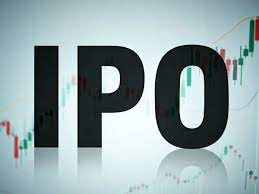Crude Oil Prices Surge Amid Fears of US Involvement in Israel-Iran Conflict; MCX Rates Spike 2%
IIE DIGITAL DESK : June 19, 2025 — Global crude oil prices witnessed a sharp rebound on Wednesday as heightened geopolitical tensions in the Middle East, especially between Israel and Iran, stoked fears of broader international involvement. The possibility of United States military intervention in the region further intensified supply concerns, triggering a rally in crude futures across international and Indian markets.
On the Multi Commodity Exchange (MCX), the crude oil contract for July delivery surged by nearly 2%, closing at ₹6,443 per barrel, compared to the previous day’s close of ₹6,316. The spike was primarily attributed to a sudden increase in buying activity, driven by global cues and investor anticipation of prolonged supply disruptions.
International benchmark Brent crude rose over 1% to trade above $76.10 per barrel, while West Texas Intermediate (WTI) futures also climbed 0.9% to hover around $77.40 per barrel. This surge came after Israeli airstrikes reportedly targeted Iran’s nuclear facilities in Arak and Natanz, escalating the already tense situation. Iran responded with missile attacks, including one that reportedly hit a medical facility in Israel.
The biggest concern rattling the oil markets now is the potential for a broader war in the Gulf region. Statements from former US President Donald Trump—suggesting approval of a contingency plan to strike Iranian military positions—have added fuel to the speculative fire. While no final order has been issued, just the possibility of US military involvement has reawakened fears of supply chain disruptions, especially through the Strait of Hormuz.
The Strait of Hormuz remains a critical chokepoint through which nearly 20% of the world’s oil supply flows. A conflict in this region could significantly restrict global crude availability, sending prices soaring. Industry analysts estimate that if access through Hormuz is compromised, crude prices could witness an immediate spike of $10–$15 per barrel.
In India, which imports over 80% of its crude requirements, rising global oil prices could have a cascading effect on inflation and retail fuel rates. A stronger dollar and weaker rupee further compound the import burden. The current rally in MCX crude futures reflects both international price sentiment and domestic currency pressure.
Market experts believe the volatility will persist until diplomatic clarity emerges. Jigar Trivedi, a commodities analyst at Reliance Securities, noted that if US involvement becomes official, Brent crude could test $85–$90 levels in the near term. “The Middle East has once again become the centre of uncertainty for commodity markets,” he added.
Apart from geopolitical developments, crude oil inventories in the United States have also contributed to the price momentum. Data released by the American Petroleum Institute (API) showed a significant drawdown in weekly stockpiles, further tightening supply expectations.
Back home, Indian oil marketing companies are reportedly keeping a close watch on global movements to adjust pump prices if needed. Although current consumer fuel prices have remained stable, any sustained upward momentum in international oil markets could force revisions in retail rates, impacting transport, logistics, and household expenses.
As the world awaits further developments between Iran and Israel, and eyes Washington's next steps, oil markets remain on edge. The coming days are expected to be volatile, with traders and policymakers alike bracing for possible disruptions and inflationary pressures.
The rise in crude oil prices underscores the sensitive balance between geopolitics and global markets. With the Middle East once again in turmoil and fears of US military action mounting, the oil price rally on the MCX and global exchanges appears to be just the beginning of a potential long-term surge, unless de-escalation efforts gain traction swiftly.
You might also like!
















